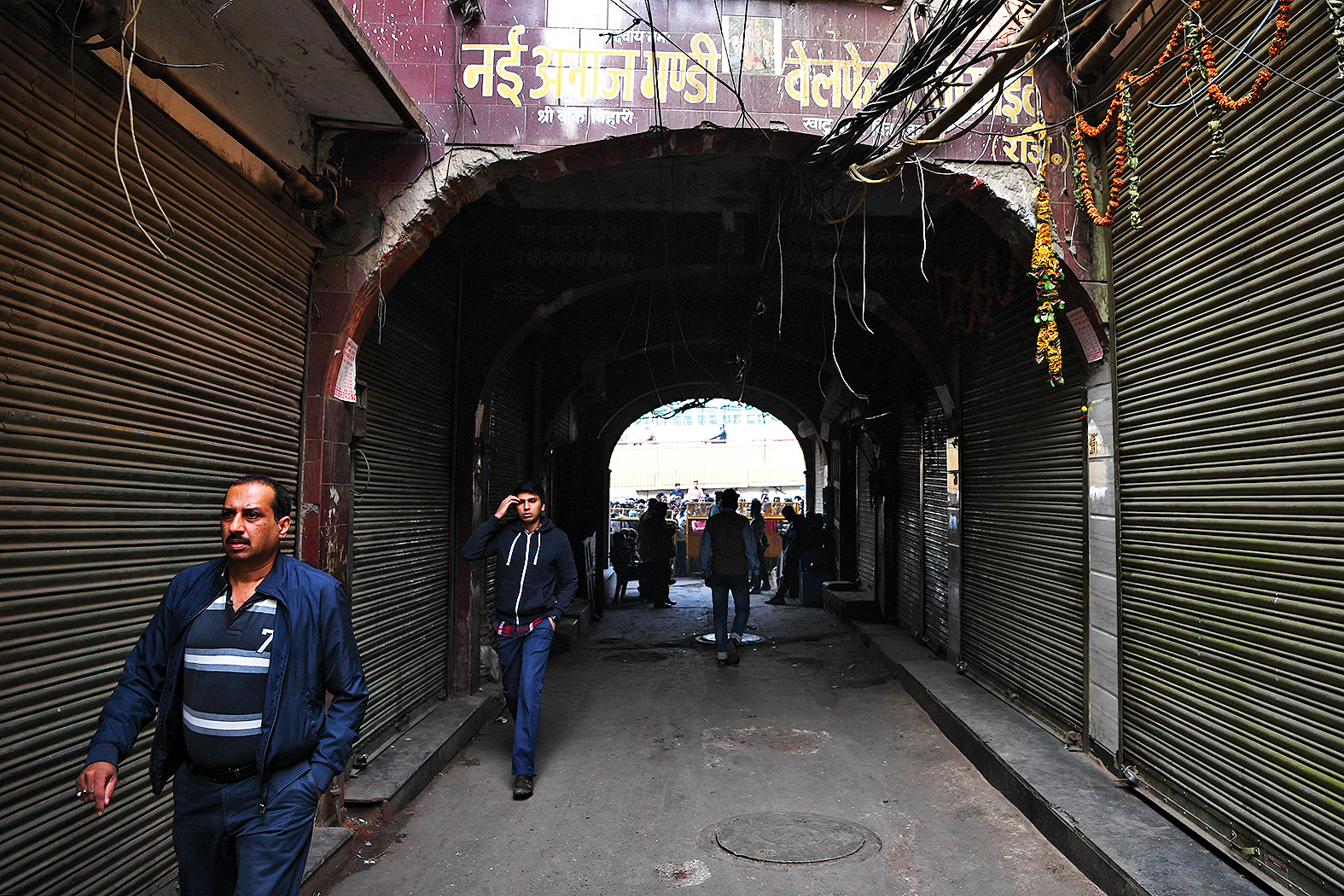
Residents walk past a factory site where a fire broke out a day before, in Anaj Mandi area of New Delhi on December 9, 2019. - At least 43 people were killed on December 8 in a devastating fire that ripped through a bag factory in the congested old quarter of the Indian capital New Delhi, with survivors describing the screams of workers trapped inside. (Photo by Sajjad HUSSAIN / AFP)
One of the recent tragedies to hit Delhi since the Uphaar Cinema fire in 1997 – which had left 59 dead – is the one that took place on December 8.
The early morning fire in a residential building at Anaj Mandi, which was illegally being used as a manufacturing unit, saw the lives of 43 individuals taken away.
The majority were labourers from Bihar and Uttar Pradesh, cramped together in little rooms. The factory acted as their workplace and as well as their home.
By Monday, families of the 34 persons whose remains had been taken to Maulana Azad Medical College mortuary waited anxiously to take them back home.
Outside the mortuary’s gates, shut off to everyone except the next of kin, a huge crowd had congregated. It included the extended family members of the deceased and friends. All shaken up by the tragedy a day earlier but at that point trying to work out the practical logistics of taking their family/friends’ bodies back.
Along with them was a huge team of journalists, TV, print and photographers. All waiting to hear something from the families, or watching for the gates to open for hearses to drive by.
As a journalist covering a crisis, it was pretty apparent on the caution that was required while approaching family members. These were people who had lost someone dear to them; we were people covering their loss, reminding them with each question that the end to a life had taken place.
As I myself approached families, there were some who spoke without hesitation, others who had perhaps spoken to reporters before me looked away with dismay or just shook their heads to say ‘No, I don’t want to talk’. I got it. I also heard it.
Groups of young men originally from Samastipur in Bihar, where at least 10 victims hailed from, spoke amongst themselves about how journalists just wanted a byte for their cameras. That they had no other work but to constantly question them about the day, and that this would not help the victims’ families in any way.
I can draw parallels with one thing from the animal kingdom: Sometimes people may think we are like vultures. Scavenging for a meal.
As I stood speaking to the brother of a woman who had lost her husband, another journalist stuck her finger right in front of his face, almost demanding his name. The man clearly taken aback first looked at me and then at the other journalist to answer her question. Her next question was who did the person lose, but it was put bluntly, almost as if she was running a census survey for the government. It was grotesque, annoying and frustrating, all at the same time.
Yes, she had cut me off and wanted to speak to the man even before I had finished the interview. But that’s not what was so obnoxious, it was her total lack of compassion that I felt as she questioned them.
This happens all too often as we see when the “bad examples” of journalism are cited. One of those would be TV reporters pushing their mikes onto the faces of persons who have lost their home or a loved one, for example, and asking, “How does it feel”?
Perhaps the problem lies in the training of these individuals, or maybe more so because we live in a constant rush for news gathering, at the greatest speed. It almost becomes a robotic routine for those working in dailies on belligerent deadlines.
Or then there are people like Anjana Om Kashyap of Aaj Tak. An executive editor, with a show that is quite popular, you may think she has the skills to be able to, with journalistic prudence, report on a tragedy. But the infamous episode in which she questioned a doctor while he was attending to patients in an ICU at a hospital of Bihar during the acute encephalitis outbreak was shocking.
But these are a the few wrongs. There are still many rights. The tragedy saw many journalists in the field, bringing the stories of administrative lapses, and of the flouting of labour laws, amongst others. Many did it right.
Soon after the killing, the Lawrence Bishnoi gang claimed responsibility through a social media post,…
He was accompanied by Uruguay great and close friend Luis Suarez and Argentina teammate Rodrigo…
A team of the Goa Police, along with the Luthra brothers, landed at the Manohar…
Johar celebrated the news by sharing the screenshot of Oscar's list that mentions "Homebound" in…
An AQI between 0 and 50 is considered 'good', 51 to 100 'satisfactory', 101 to…
UN Secretary General Antonio Guterres will attend the India–AI Impact Summit 2026 that will be…